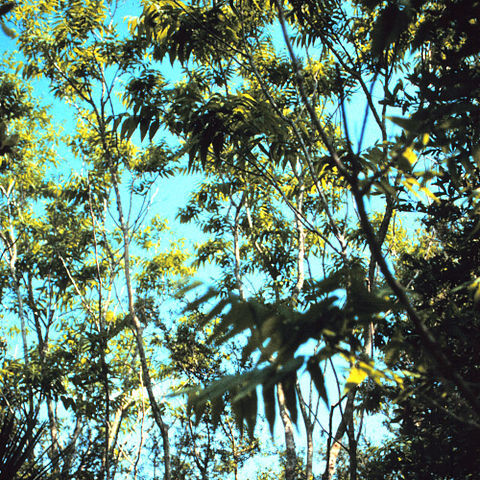Trees, rarely shrubs, monoecious. Leaves paripinnate, rarely simple, alternate, estipulate; leaflets entire, opposite or alternate. Thyrses large, many branched, terminal or fascicled at branchlet apices; bracts and bracteoles subulate, small. Flowers unisexual, actinomorphic or zygomorphic. Sepals 5 or sometimes 4, imbricate, outer 2 smaller. Petals 5, clawed, with 2 earlike scales at base or margin thickened adaxially, or 4 (S. sect. Dittelasma), without claw, with 1 large scale at base adaxially. Disk acetabuliform or semilunar, fleshy, sometimes lobed. Stamens (male flowers) 8, rarely more or fewer, exserted; filaments hairy below middle or at base. Ovary (female flowers) obovoid or turbinate, usually 3-lobed, 3-loculed; ovules 1 per locule, ascending; style terminal. Fruit parted into 3 schizocarps, usually 1 or 2 developed, developed schizocarps subglobose or obovoid, abaxially slightly flat, adaxially with 1 or 2 semilunar sterile schizocarps; schizocarps free when mature, broadly ellipsoid or subglobose; pericarp fleshy, containing abundant saponin, long sericeous at place bearing seed adaxially. Seeds black or pale brown, ellipsoid or subglobose; testa osseous, pseudotesta absent; hilum linear; embryo arched, cotyledons thick. 2n = 22, 30.
Polygamous shrubs or small trees; stems glabrous or subtomentose. Leaves pin-nate, exstipulate, petiolate, with a narrowly winged or wingless rachis; leaflets opposite or alternate, petiolulate or sessile, elliptic or ovate-lanceolate, entire, membranous or chartaceous. Panicles large, terminal, divaricately branched; bracteoles minute. Flowers white, short-pedicellate, often regular, obliquely sym-metrical, small; sepals 5, orbicular or ovate, concave, imbricate, the outer 2 smaller; petals usually 5, subglabrous or pubescent outside, with a short scale above the claw on the inside, the scale barbate; disc usually regular, glabrous or pilose; stamens 8, exserted, pilose at the base; ovary 3-lobed, 3-locular, the style subulate or shortly filiform, the ovules singular in each locule. Fruits drupaceous, indehiscent, with 3 or 2 (1) cocci, carnose or coriaceous, the cells oblong or globose; seeds usually globose, without an aril.
Small to medium-sized trees. Stipules wanting. Leaves pinnately compound or less often unifoliolate; compound leaves with a rudimentary distal leaflet; rachis and petioles winged, margined, or unwinged; leaflets alternate or opposite, coriaceous, with entire margins. Inflorescence a thyrse with lateral, simple or compound dichasia. Flowers 5-merous, actinomorphic or partly zygomorphic, functionally pistillate or staminate (plants polygamous-monoecious). Calyx with 2 smaller outer sepals; petals with reduced marginal appendages, or appendages lacking; disk annular and cupular. Stamens 8, exserted; filaments of equal length; anthers dorsifixed. Ovary 3-carpellate, each carpel with a single ovule. Fruit tardily schizocarpic, 1(2)-coccate, with 2(1) rudimentary cocci, separating into indehiscent globose mericarps, with fleshy pericarp containing much saponins. Seeds globose, exarillate.

